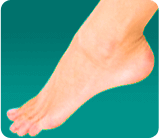Emerging Technologies: Fat Grafting, PRP and Stem Cell Therapy – The Latest Research
I recently returned from the American Academy of Cosmetic Surgery World Congress on Liposuction. The program was held in Chicago and was entitled, The Magic of Fat. Scientific and practical applications of fat, as well as new treatment options, were discussed.
We have been involved in fat grafting for approximately 20 years and are fully experienced with its advantages and disadvantages. The concepts of what is actually happening with the fat graft are changing. The first concept, that of gentle harvesting, seems to have stood the test of time. Producing clinically significant and long-lasting results is not in question. The only question is whether it is the adult fat cells or the associated stem cells that create these results. The most recent research implies that it may be the stem cells that are responsible for these results as much or more than the survival of the transplanted adult fat cells.
Platelet Rich Plasma (PRP)

PRP or platelet rich plasma has also become a popular option for both treating cosmetic and medical issues. It is not an insurance reimbursable treatment for medical issues at this time. To produce platelet rich plasma blood is drawn from the patient in the standard technique. Special collection tubes are utilized and then spun in a centrifuge. For fat transfer PRP can be added to the harvested fat with the goal of improving it’s survivability. This technique would be most applicable to facial or breast injections. The amount of the PRP necessary for a Brazilian Butt Lift would be unrealistic and the survival rates for this procedure are already excellent. Some providers utilized PRP and combine it with the Juvéderm in a trademarked procedure called the “Vampire Facelift.” PRP may also be utilized after laser resurfacing or micro-needling techniques with the goals of improved outcome and enhanced healing. From a medical perspective PRP is utilized to treat musculoskeletal disorders such as lateral epicondylitis and osteoarthritis.
Micronized Fat
The concept of micronized fat or nano fat is also now in play. Tumescent anesthesia is utilized to harvest fat and then through mechanical manipulation and filtering the large fat cell components are removed, leaving growth factors and stem cells in the resulting product. This micronized fat can then also be mixed with PRP to further enhance the success of the treatments. The ALMI procedure or autologous lipocyte micronized injection produces a product that can be injected through fine needles, something that a classic fat transfer techniques cannot offer. This may be injected into fine lines and can also be utilized for generalized facial rejuvenation. This product would be technically called adipose tissue stromal vascular fraction-tSVF. This product can also be injected into joints and has the advantage of having not only PRP but also stem cells, which may further augment the repair of an osteoarthritic joint.
Enzymatically Processed Fat and Stem Cell Therapy
PRP and nano fat, however, are not the same as enzymatically processed fat, which would create adipose cellular stromal vascular fraction-cSVF. Here we are talking about a product that has a high concentration of stem cell and pericytes that have been applied to many chronic medical conditions and would be appropriately known as true stem cell therapy. Stem cells may be utilized in osteoarthritic joints, chronic obstructive pulmonary disease, multiple sclerosis, and a host of other medical issues. Stem cells are processed in such a fashion that they may be administered not only within the joint, but also through a classic intravenous infusion. They also may be injected into the spine for neurologic issues. Once again, these are not yet medically reimbursable procedures.
We will keep you informed as this exciting new area develops!









